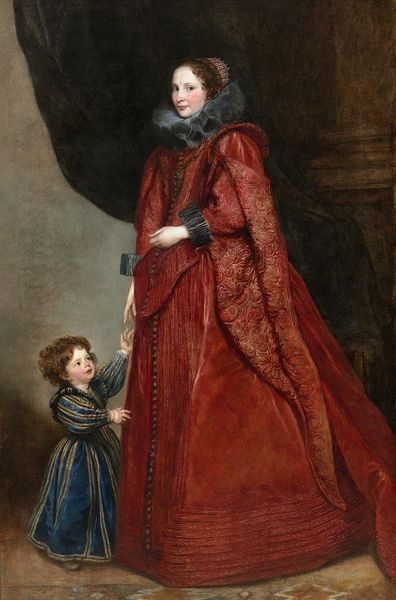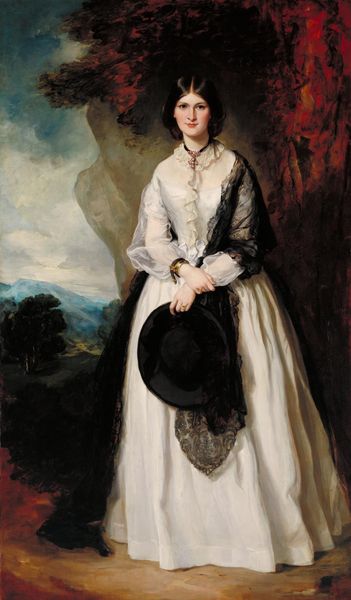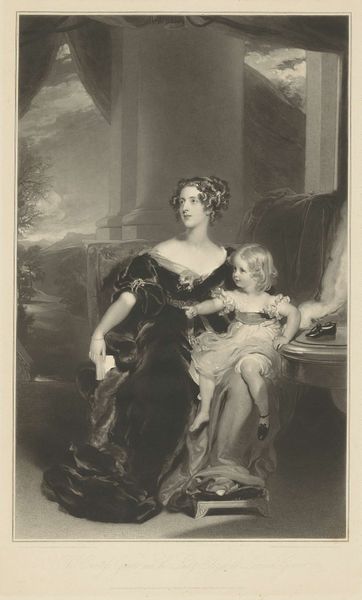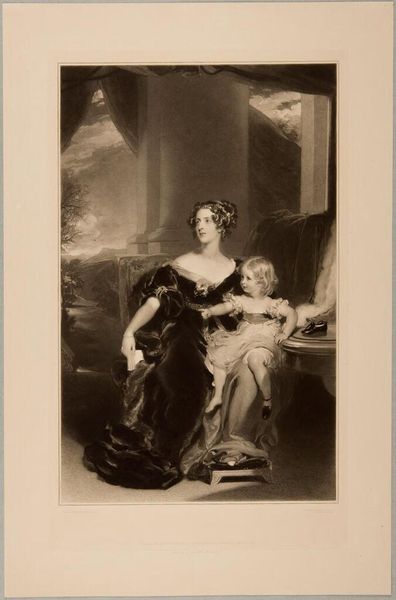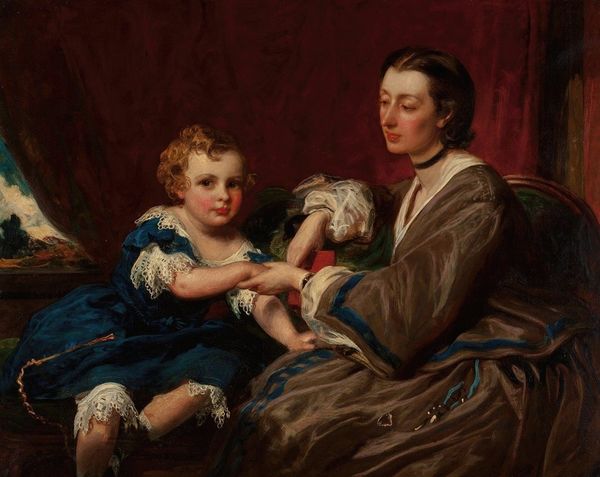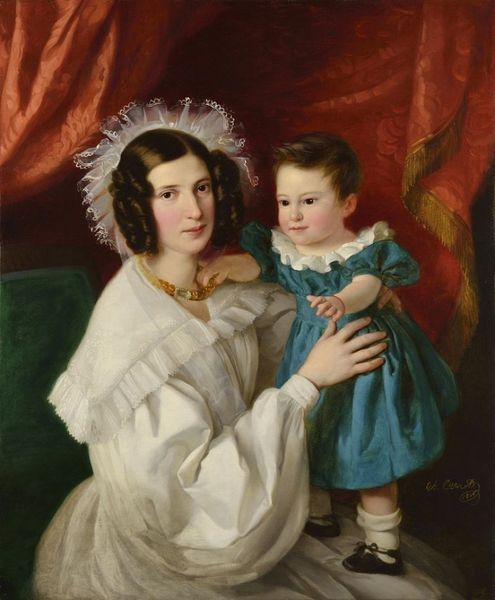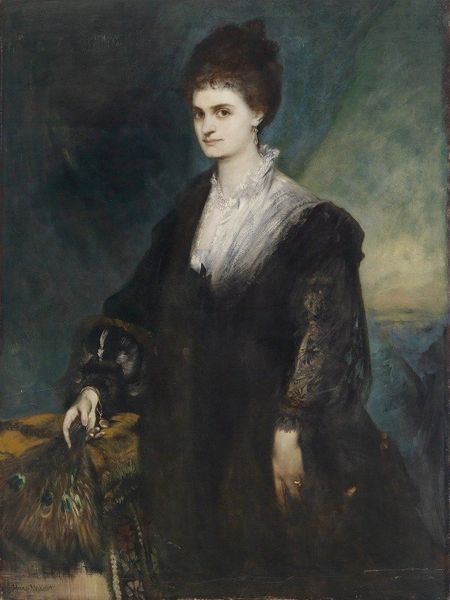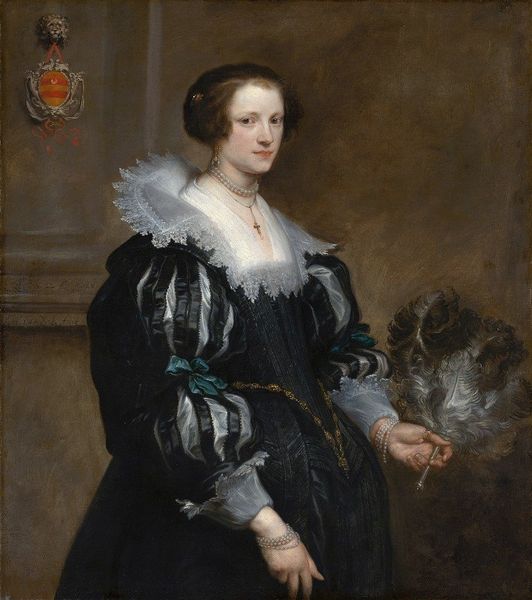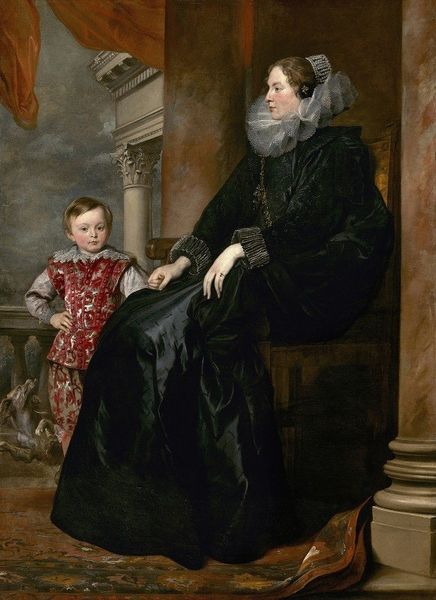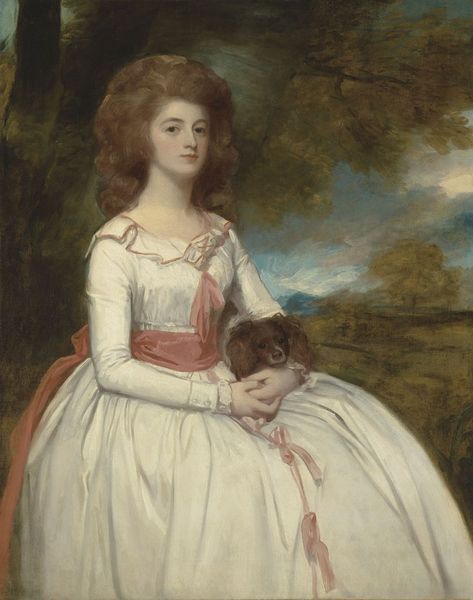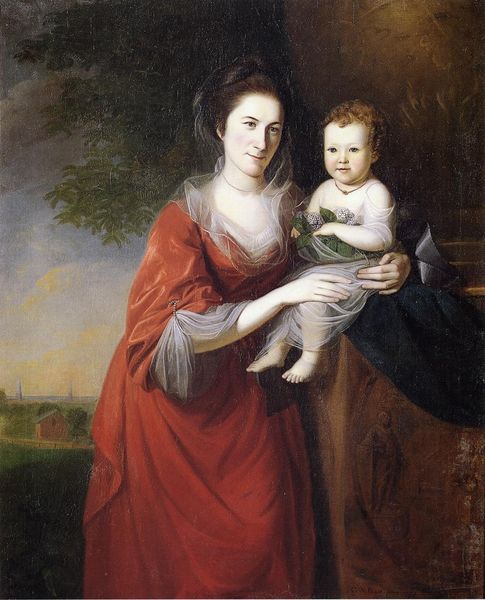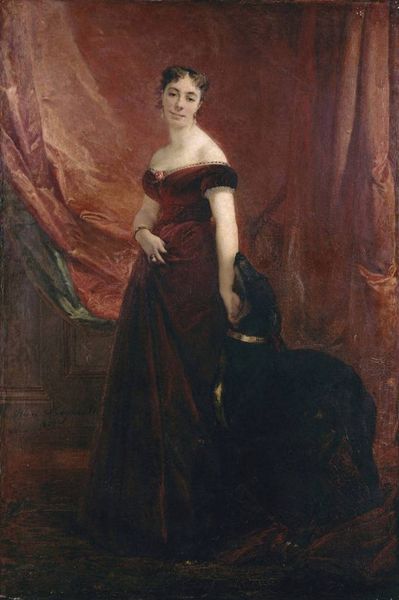
#
portrait
#
impressionistic
#
green hue
#
green tone
#
possibly oil pastel
#
famous-people
#
neo expressionist
#
green background
#
underpainting
#
abstract character
#
surrealist
#
lady
#
female-portraits
#
expressionist
Dimensions: 229.2 x 171.5 cm
Copyright: Public domain
Curator: Here we see John Singer Sargent’s 1904 portrait of "The Countess of Lathom," currently residing at the Chrysler Museum of Art. Editor: The initial impression is one of heavy, almost suffocating materiality. The dark gown, the draped fabric… It feels luxurious but somber. Curator: Notice how Sargent uses the luminosity of the Countess’s jewelry and lace to punctuate the darkness. The string of pearls in her hand mirrors the rosary, visually tying her worldly status to spiritual considerations. Editor: And speaking of those pearls, their manufacture and acquisition involved extensive labor – the divers, the traders, the wealthy consumers. These materials are never neutral; they are steeped in social and economic power dynamics. Curator: Indeed. The color palette too – the preponderance of dark browns and blacks contrasted only by the cream tones of her skin and the pearl accessories– evokes a period of mourning. Dark clothing in portraiture became very popular with the rise of photography, actually. What might have been a memorializing symbol? Editor: It could symbolize status, or be pure aesthetic consideration on Sargent's behalf to show skill with these colors and forms, and to sell well! But let's think about those gestural brushstrokes – you can practically feel the artist's hand at work here, building up those layers of oil paint. Curator: Right, consider what these gestures might communicate in concert with what this woman wishes to embody about her identity. Think about similar presentations of wealth in similar portraitures of this era: a kind of cultural theater about British societal values at the turn of the century? Editor: So, it's less about her unique character and more about conforming to a type – a representation of inherited wealth? Curator: Perhaps a strategic deployment of symbolism intended to solidify a particular perception of this woman's place in British society? Editor: This portrait forces a close look at the intersection of artistry, production and what could even be performance, within this Edwardian-era symbol of prestige. I’m left with even more to consider beyond what a first glance tells us. Curator: Absolutely. I'm struck anew by how a single painting, through the deployment of symbolism and choice of materials, opens a doorway into a complex interplay of cultural memory, identity, and status.
Comments
No comments
Be the first to comment and join the conversation on the ultimate creative platform.

